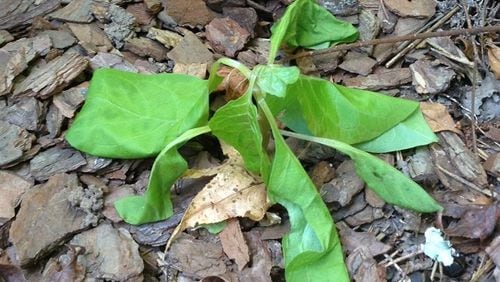Q: What kind of weed killer do you recommend instead of Roundup? Gary Pearson, Coweta County
A: There are several alternatives to the herbicide glyphosate, commonly referred to as Roundup. Sometimes the best and most permanent solution to control a weed is a quick application of a garden knife or a hoe. This was my father’s answer to morning glory vines in his tomatoes, particularly since he had three sons nearby to carry out his orders. Roundup is a “non-selective” weed killer: It deals death to any green plant. One alternative is herbicidal soap. Ammonium nonanoate is the active organic ingredient in Ortho Groundclear Grass and Weed Killer. Another choice is herbicidal vinegar. Products that contain 30% acetic acid (not kitchen vinegar) kill weed leaves in just an hour. A third option is citrus+clove oil, contained in Bonide BurnOut. You can see plant leaves wither as you watch and the area smells good besides! More organic weed killers at https://bit.ly/GAorgweed.
Q: My Japanese maples, rose bushes and lawn all have a fungus problem. Do spores travel from plant to tree to grass? Kris Carey, email
A: This has been a good year for fungi to grow on plant leaves and fruit. We haven’t had long periods between rains, so there has been plenty of moisture for fungal development. There are millions and millions of fungi around us all the time. Only a small percentage attack plants. Of those that do so, almost all are specific for a particular plant or a particular family of plants. The fungus that causes spots on your Japanese maple leaves is not the one that causes lawn diseases or fruit rot. Next time you have a chance to buy a plant, do a little research and look for those described as “disease resistant.” In my experience, there is a huge improvement between old-fashioned phlox and the newer mildew-resistant phlox.
Q: Can I grow Cape gooseberry here? My location gets full sun and is next to the house. Dinny Gujral, Johns Creek
A: If you can grow tomatoes, you can grow Cape gooseberry, Physalis peruviana. The golden, marble-sized fruit is not common at local groceries because it is not easy to ship. In my travels, I’ve often seen it used as a garnish for desserts. It is a great homegrown fruit/vegetable. Plant seeds outdoors in early May. You can start them indoors in mid-April. It usually takes 16 weeks until harvest. You can eat the fruit when the papery husk has completely dried.
Listen to Walter Reeves’ segments at 6:35 a.m. on “Green and Growing with Ashley Frasca” Saturday mornings on 95.5 WSB. Visit his website, www.walterreeves.com, follow him on Twitter @walterreeves, on Pinterest, or join his Facebook Fan Page at bit.ly/georgiagardener for more garden tips.






